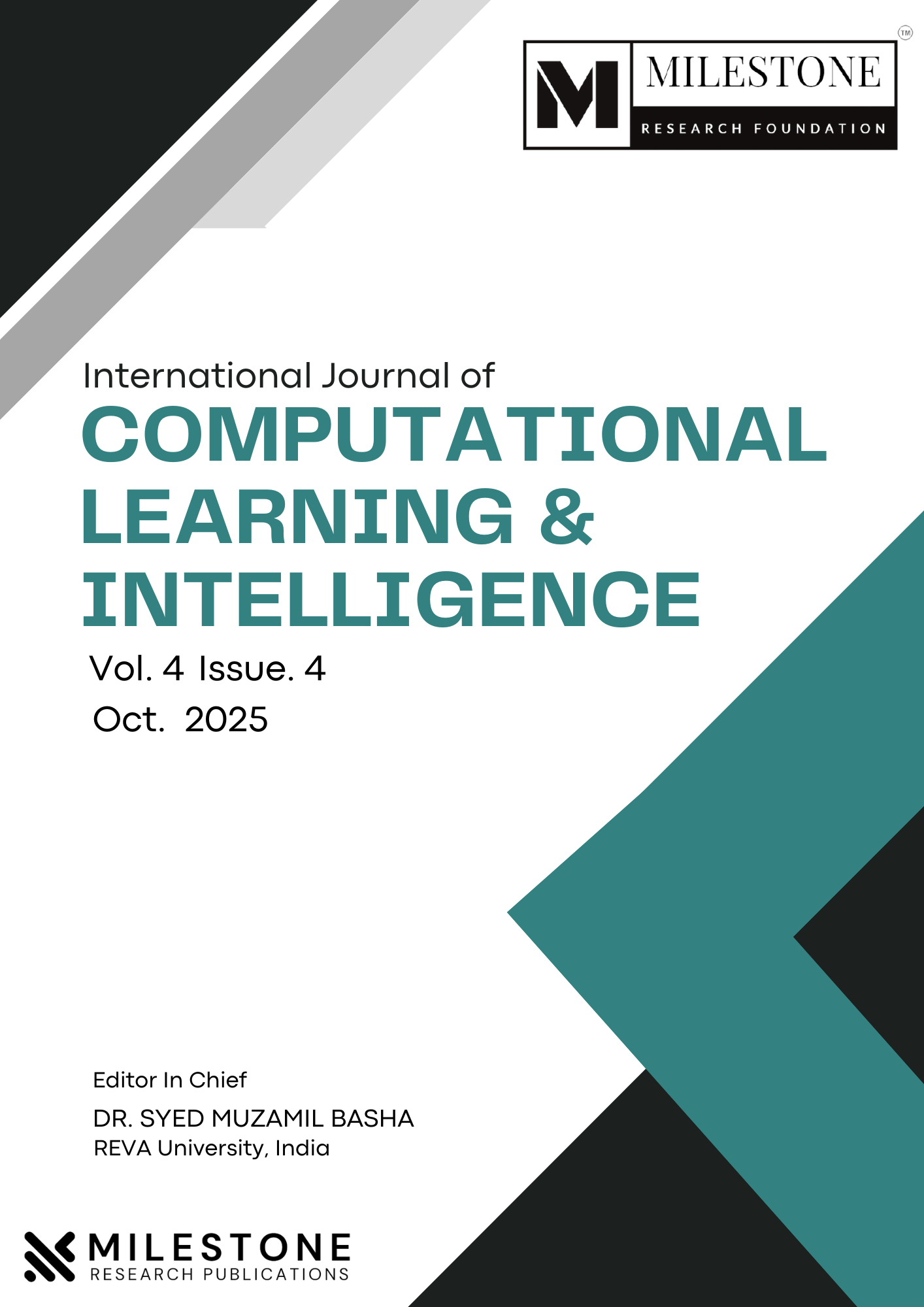Published 2025-05-20
Keywords
- Loan calculator,
- Web Application,
- EMI,
- EMI calculator
How to Cite
Copyright (c) 2025 Challa Ashok Kumar Reddy, C S Shoaib Basha, Madhu Chetan, P S Lalith Sahan, Afifa Salsabil Fathima

This work is licensed under a Creative Commons Attribution-NonCommercial-NoDerivatives 4.0 International License.
Abstract
A Loan Eligibility and EMI Calculator is a financial assessment tool designed to help individuals evaluate their eligibility for a loan and estimate their monthly repayment amount. The system enables users to input key financial parameters, such as income, credit score, existing liabilities, desired loan amount, interest rate, and repayment tenure. Based on this information, it determines whether the applicant qualifies for a loan and calculates the corresponding Equated Monthly Installment (EMI). The primary objective of this tool is to simplify and automate the loan evaluation process, making it more accessible to potential borrowers. Loan eligibility is determined based on various factors, including the applicant’s income-to-debt ratio, creditworthiness, and financial stability. The EMI calculation follows a standardized formula that considers the principal amount, interest rate, and tenure, allowing users to assess their financial commitments before applying for a loan.This tool serves as a valuable resource for both individuals and financial institutions. Borrowers can use it for informed decision-making regarding loan affordability, while lenders benefit from a streamlined pre-qualification process. The system can be implemented as a web-based or mobile application, integrating real-time data to enhance accuracy.
References
- Agrawal, S., & Meena, H. (2020). Real-time financial market systems. Computational Finance and Data Science, 7(2), 34–50.
- Ahmed, S. T., & Patil, K. K. (2016, October). An investigative study on motifs extracted features on real time big-data signals. In 2016 international conference on emerging technological trends (ICETT) (pp. 1-4). IEEE.
- Ahmed, S. T., & Syed Mohamed, E. (2020, February). Phonocardiography (PCG) signal optimization and compression for low line transmission in telemedicine. In International Conference on Automation, Signal Processing, Instrumentation and Control (pp. 1127-1137). Singapore: Springer Nature Singapore.
- Box, G. E. P., Jenkins, G. M., & Reinsel, G. C. (2015). Time series analysis: Forecasting and control. Wiley.
- Gupta, S., Sharma, A., & Kumar, R. (2022). Neural network models for loan default prediction. IEEE Transactions on Neural Networks and Learning Systems, 33(8), 3210–3222.
- Kumar, A., & Rao, S. (2018). Automated credit scoring systems: A review. Journal of Financial Technology, 5(3), 12–20.
- Lee, J., & Kim, H. (2020). Client-side JavaScript frameworks for financial applications. Journal of Web Engineering, 19(4), 45–60.
- Patel, R., Desai, V., & Shah, P. (2019). Web-based financial calculators for personal banking. In Proceedings of the IEEE International Conference on Computer Applications (pp. 123–130).
- Sharma, R., Singh, V., & Mehta, K. (2021). Machine learning approaches for financial prediction. International Journal of Advanced Computer Science and Applications, 12(5), 45–53.
- Swamy, R., Ahmed, S. T., Thanuja, K., Ashwini, S., Siddiqha, S., & Fathima, A. (2020). Diagnosing the level of Glaucoma from Fundus Image Using Empirical Wavelet Transform. In Proceedings of the First International Conference on Advanced Scientific Innovation in Science, Engineering and Technology, ICASISET (pp. 16-17).

